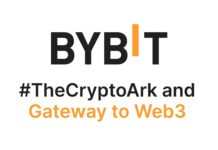Featured Bitcoin, Blockchain & Cryptocurrency News
Michael Saylor: Bitcoin remains unaffected by Trump’s tariffs
Michael Saylor emphasizes Bitcoin's independence: What impact could the new tariffs have on the cryptocurrency market?
Michael Saylor Defends Bitcoin Amid Tariff Increases
Michael Saylor, Executive...
Riot Platforms reaches new Bitcoin production record in March
Riot Platforms, Inc. (NASDAQ: NASDAQ:RIOT), a major player in the Bitcoin mining sector with a market capitalization of $2.56 billion, reported record production of...
Bitcoin: Opportunities and risks in times of falling bond yields
Recent developments in the financial markets have caught the attention of investors worldwide. US Treasury yields have fallen to a six-month low, raising questions...
New milestone: Bitcoin reaches hashrate record
While panic dominates the crypto markets, there is also some positive news. The Bitcoin network (BTC) has set a new hashrate record, according to...


















